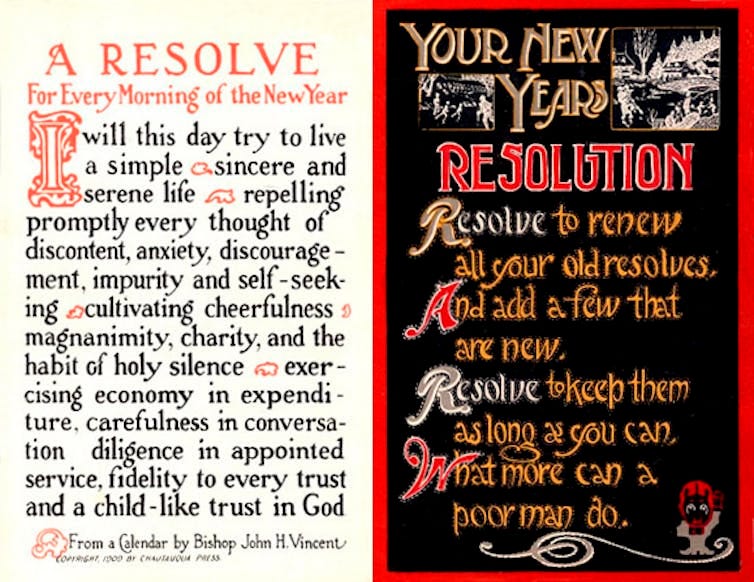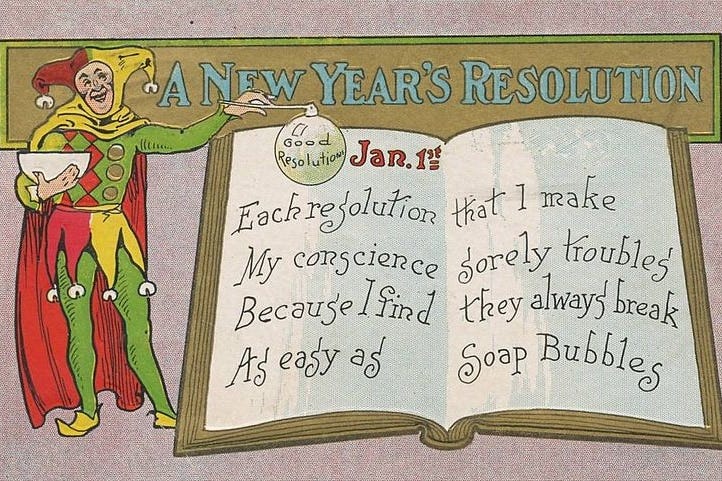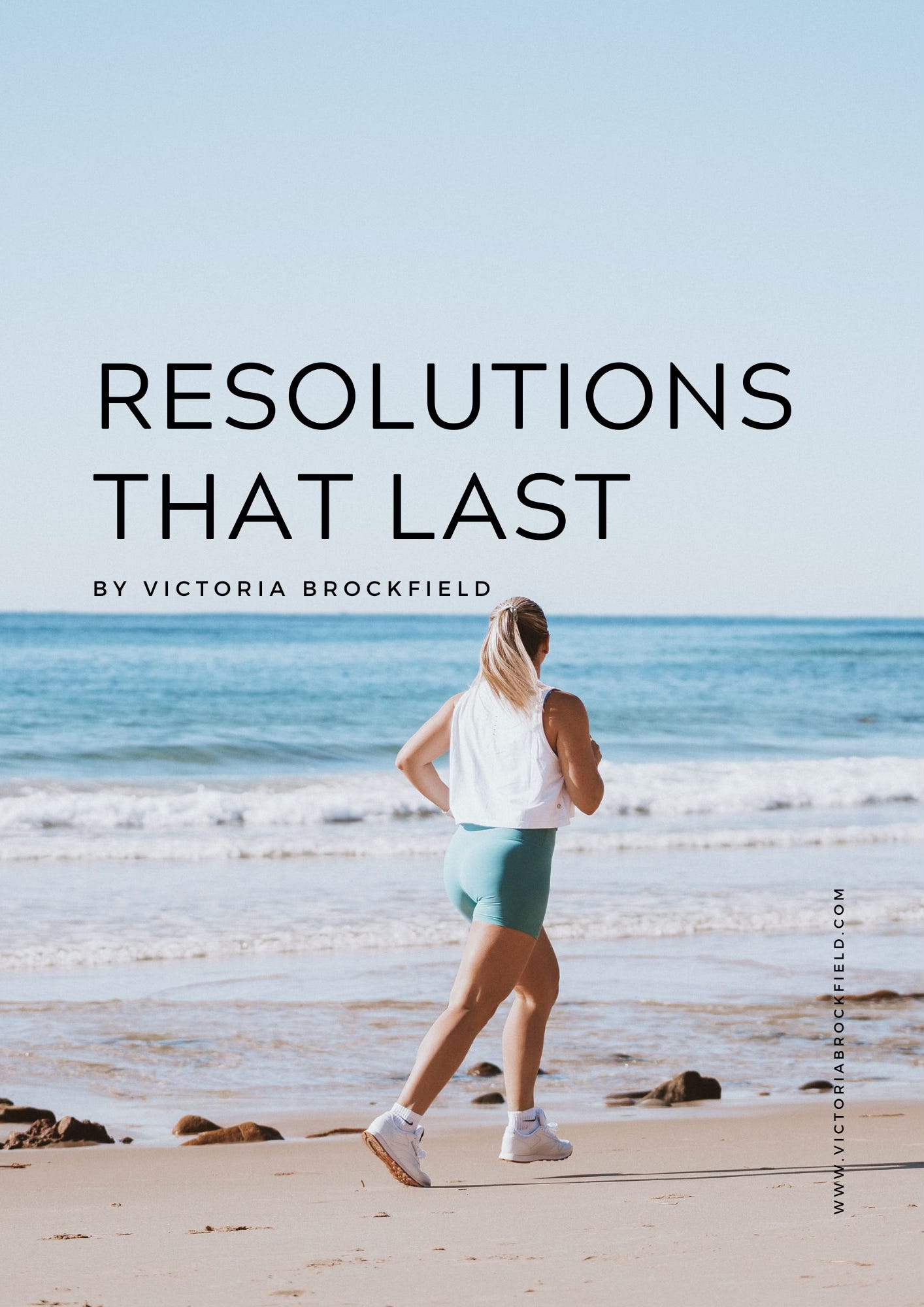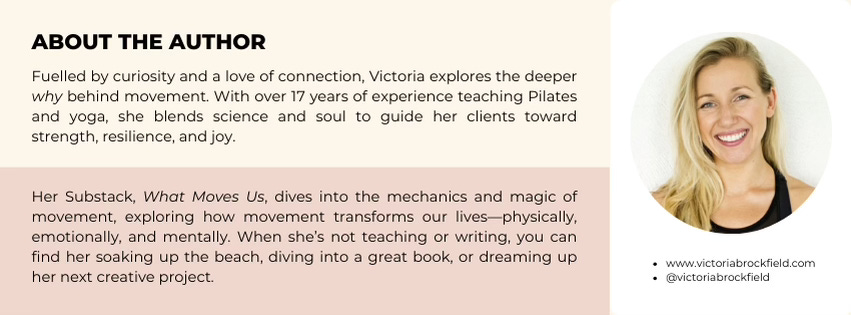New Years Resolutions and Your Exercise Goals are a Timeless Match
Yes, this is your year to train smart - but, if you're creating SMART goals for your fitness resolutions, consider this before locking yourself into promises you might not be able to keep.
It’s the first few weeks of January—that time of year when gyms fill up, yoga studios buzz with new faces, and fitness apps light up with ambitious goals. New Year, New Me becomes the ubiquitous mantra of many.
I personally love seeing my Pilates and yoga classes fill up not only with regular clients, but also plenty of new, hopeful and enthusiastic faces, determined to make their New Years resolutions their new reality.
But have you ever stopped to wonder why? Why is it that year after year, across cultures and centuries, humans have tied the idea of self-improvement so tightly to physical movement?
And more to the point, why did we decide that New Years was the best time in our calendars to kickstart a new fitness goal?
To understand all of this, we have to dig a little bit into the history of New Year’s resolutions, investigate when exactly fitness became such a big goal in our annual resolution list, why fitness and movement matters to our human experience, and what it is that makes or breaks our resolutions.
A (Brief) History of New Year’s Resolutions & the Cultural Movement of Fitness
The concept of New Year’s resolutions is ancient, dating back over 4,000 years to the Babylonians, who started their new year with the Spring equinox. Their resolutions, however, looked a little different from ours—being an agricultural society, they promised their gods to pay debts and return borrowed farm equipment.
Ancient Romans continued the tradition after shifting the new year to January 1st in 46BC, offering their promises to the god Janus (god of beginnings, endings, transitions, and doorways, for whom January was named - often depicted with two faces, one looking to the past and one to the future). Again, their vows weren’t about personal fitness, although for the Romans, exercise was universally popular for both men and women; instead, they were mostly about pledging good behaviour, and settling accounts.

In the Middle Ages, knights had their own version of New Year’s resolutions. At the close of each year, they would make a symbolic pledge known as the “Peacock Vow.” By ceremonially placing their hands on a peacock, they reaffirmed their commitment to chivalry and their knightly code of conduct for the coming year.
Fast forward to the early 20th century, and resolutions began to shift towards self-betterment in a more personal sense. People started focusing on habits they wanted to break or new routines they hoped to adopt.
But it wasn’t until the post-war era, particularly the fitness boom of the 1970s and 80s (think Jane Fonda, aerobics, and the birth of the modern gym), that exercise became nearly synonymous with resolutions.
By the 2000s, fitness wasn’t just about physical health; it was tied to mental well-being, productivity, and even identity. The rise of wellness culture reinforced the idea that movement was essential not only for health but for living a better life.
Today, fitness is more than a trend; it’s a cultural norm. We set resolutions around movement because, in many ways, it feels like the ultimate reset button - a physical and mental overhaul.
If you’re keen for the full historical deep-dive on the history of New Years resolutions (fascinating in itself), check out these great articles by TIME and CNN. But let’s move on - what makes fitness or movement such an important part of our goal-setting portfolio…?
Why Movement Matters
On a deeper level, movement is fundamental to our humanity. From the moment we take our first steps as children, our bodies are wired to explore, express, and connect through movement.
There’s a fascinating paper by Stults-Kolehmainen that explores the concept of drive, or motivational energy, as a precipitator of human behavior, providing a unique and rarely-considered perspective on physical activity engagement.
Drive is the impetus, often automatic and unconscious, to attain needs and thus restore homeostasis in the human body - returning it to optimal conditions of functioning. Drive states have certain properties, as demonstrated below, such as the experience of deprivation, then tension, consumption, relief and satiation.
Looking at the chart above, movement may be operationalized as a motivation state, characterized by the negative affect of restlessness on deprivation, arousal upon activation, and a desire to have the need sated, resulting in a feeling of exertion. One might then argue that movement is a primary need or driver for most humans, most notably in younger years as we grow, and certainly continuing well into older age as a way to maintain our internal systems.
There’s also other reasons why movement continues to hold such a significant place in our lives:
Biological Imperative: Movement is survival. Our ancestors moved to hunt, gather, and migrate. Without human movement, we simply wouldn’t have made it to this time and stage in history.
Emotional Expression: Whether it’s dancing, stretching, or sprinting, movement allows us to express emotions in ways words cannot. Think of the catharsis of a long run or the joy of dancing freely.
Connection: Movement brings us together. Whether it’s team sports, group fitness classes, or family hikes, shared movement creates bonds within our community.
So there’s plenty of reason why we should commit to moving better and more intentionally each year. But the question remains - how do we keep our resolutions?
A Fresh Perspective on Resolutions
Perhaps it’s time we rethink New Year’s resolutions around movement. Traditional SMART goal setting starts from a question of what we want to be, or do, or create, and then choosing specific, measurable, achievable, relevant, and time-bound actions to frame our goal. What’s missing here is the motivation behind the goal - the WHY.
Instead of setting rigid goals to lose X kilos or work out Y times a week, that are easy to lose motivation for because we forget the reasons why we wanted to do it in the first place - what if we reframed our approach and explored first how we want to feel, and build our SMART goals from there?
What if we asked:
How do I want to feel when I move?
What kinds of movement bring me joy?
How can I invite more play into my life?
A perfect example of this is that of someone who’s decided that they want to lose weight and go to the gym more. They might decide to create SMART goals based on around these, but come week 3 of January (this Bloomberg article says movement app Strava noticed a marked statistical decrease in user activity in this week, following a new year’s membership rush), their motivation starts to wane, they start to resent the extra work these goals create, and they forget why they even committed to them in the first place.
Instead of focusing on weight loss, or the number of sessions at the gym, they might instead refocus on their why. When they investigate their why, they realise they actually want to increase their movement so that they can keep up with their grandchildren in the playground. They want to feel strong, fit, and playful.
They might then reflect on what types of movement motivate them and bring them joy - actually, they really enjoy swimming at the pool, and walking the dog. They don’t mind the gym, and see its importance for muscle maintenance and bone health, but don’t want to spend their whole week training there. They also want to do some fun things with the kids, like cartwheels and handstands.
All of a sudden, the motivation is different, and the goals change - they decide instead they’d really enjoy swimming a few times a week, walking the dog daily, and getting to the gym twice a week. They also decide to work towards completing a cartwheel and a handstand by the end of the year, and change their gym program to reflect their goals.
Their goals are still SMART, but now the motivation is clear, and they’ve picked things that light them up, rather than weigh them down.
If you want a little help in creating New Years resolutions that will stick, you can download my free goal-setting ebook here. I’d love to help you make 2025 your best year yet!
What Moves You?
So, as you think about your own resolutions (or intentions) this year, consider this:
What would it look like to approach movement with curiosity rather than obligation?
What if, instead of a chore, it became an act of celebration—a way to honor your body and its endless capacity to move you through life?
Movement is a privilege, not a punishment. It’s a way to connect with ourselves, our communities, and the world around us. Whether it’s a gentle walk or a strong Pilates session, movement has the power to ground us, uplift us, and remind us of our aliveness.
I’d love to hear from you: What role does movement play in your life? What kinds of movement make you feel most alive? Do you have a new year fitness resolution you’re embarking on? Hit reply, and let’s keep the conversation going.
Here’s to a year of moving with joy, curiosity and intention.
Victoria x
—
“For last year's words belong to last year's language
And next year's words await another voice.
And to make an end is to make a beginning.”
― T.S. Eliot
End Note:
If you’d like to see more of these posts, please support me! I write part-time around my teaching schedule, alongside running workshops and writing ebooks. Your subscriptions funds my time in creating future editions, and subscribers get the opportunity to request topics for future posts.
Interested in moving with me? This year, I’m creating a series of ebooks, workshops and retreats, along with an online movement platform. You can sign up to my monthly newsletter to keep up to date here:
If you found this post thought-provoking, I would be so grateful if you could please share it with someone who might enjoy it too.











